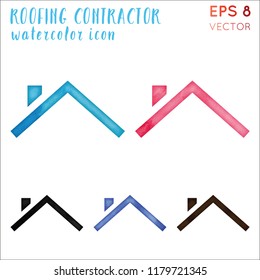Ready Your Wall Surfaces For Paint With Essential Tips And Strategies That Assure A Smooth Coating-- Explore The Vital Actions To Enhance Your Task
Ready Your Wall Surfaces For Paint With Essential Tips And Strategies That Assure A Smooth Coating-- Explore The Vital Actions To Enhance Your Task
Blog Article
Short Article Created By-Terp Gustavsen
When you're prepping your walls for painting, it's critical to follow a methodical process to make certain a perfect surface. Beginning by checking out the wall for any type of damages; this step can make or damage your job. Once you've determined any kind of issues, cleaning up the surface area properly is necessary, as a filthy wall surface can affect paint bond. After that, you'll need to spot any kind of imperfections and apply a guide. But there are specific methods and ideas that can raise your preparation video game-- let's check out those additional to achieve the most effective outcomes.
Assessing Wall Problem
Before you get your paintbrush, take a minute to examine your wall surfaces' condition. Check for any visible damages like cracks, holes, or peeling paint. https://www.express.co.uk/life-style/property/1625497/Property-tips-paint-painting-exterior-outside-house-white-beige-dirt-Emperor-Paint can affect just how the paint adheres and looks once it's completely dry. If you notice any substantial damage, you'll require to focus on repairs prior to diving into painting.
Look closely at the structure of your walls. Is the surface smooth, or exists texture that might require unique consideration? Smooth wall surfaces typically call for much less preparation, while textured surfaces may require even more time to paint equally.
Also, think about the previous paint job. If the old paint is shiny, it mightn't allow brand-new paint to stick effectively. You'll need to know if your wall surfaces have been painted with oil-based or water-based paint, as this can impact your selection of primer or paint.
Ultimately, remember of any kind of wetness problems. If you see signs of water damages or mold and mildew, address these troubles immediately to prevent further problems.
Cleaning the Surface
When you have actually evaluated the condition of your wall surfaces, the next action is cleaning up the surface. Beginning by collecting your materials: a bucket, cozy water, a light cleaning agent, a sponge or fabric, and a scrub brush for harder spots.
Begin on factory painting company of the wall surface and function your way down. Mix the cleaning agent with warm water in your container, then dip the sponge or fabric into the option. Wring it bent on prevent too much dampness on the wall surfaces.
As you clean up, pay very close attention to locations that could've accumulated dirt, oil, or fingerprints. For persistent discolorations, utilize the scrub brush gently to stay clear of damaging the paint beneath. Rinse your sponge or towel often in clean water to avoid spreading dirt around.
After cleaning, it's important to clean the walls with a moist towel to get rid of any type of soap deposit. This step makes sure a smooth surface for the new paint to comply with.
Enable the wall surfaces to completely dry entirely prior to carrying on to the next preparation actions. This comprehensive cleansing procedure will certainly aid develop a fresh canvas for your painting job, making sure the very best results.
Patching and Priming
Patching and priming are crucial steps in preparing your walls for a fresh coat of paint. Initially, evaluate your wall surfaces for any holes, splits, or blemishes. Utilize a high-quality spackling substance or patching paste to load these locations.
Use the substance with a putty knife, smoothing it out so it's flush with the bordering surface. Permit it to dry completely, and then sand it gently until it's smooth and even.
When you've patched every little thing, it's time to prime. Primer helps seal the patched areas, making sure the paint sticks effectively and gives a consistent surface. Choose a primer suitable for your wall type and the paint you'll be making use of.
Use the guide making use of a roller for bigger areas and a brush for corners and edges. If your patched locations are considerably big or permeable, you might intend to apply a second coat of guide after the very first one dries.
After priming, allowed whatever dry extensively before going on to paint. This preparation won't only improve the appearance of your walls however likewise prolong the life of your paint task.
Take your time, and you'll be pleased with the outcomes.
Final thought
By adhering to these straightforward actions, you can achieve a smooth and professional finish on your walls. Beginning by examining their problem, after that tidy and patch any blemishes prior to using primer. Bear in mind to permit ample drying out time and make sure every little thing is smooth prior to you study painting. With the right prep work, you'll establish the stage for an attractive transformation in your area. Now, gather your materials, take in the fresh air, and get ready to paint!
